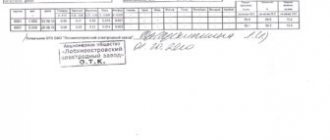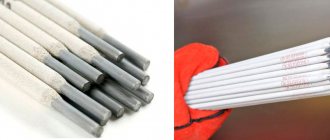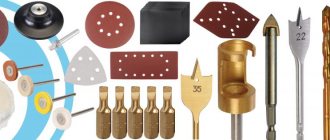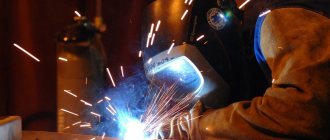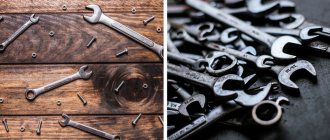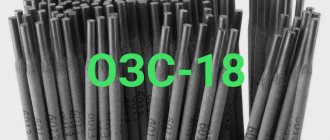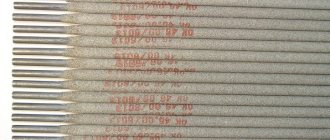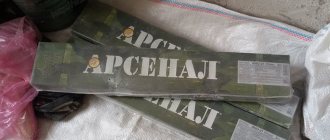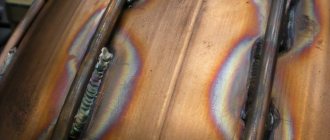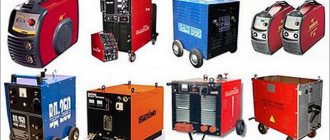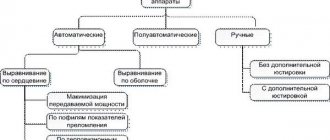It is impossible to achieve the desired welding quality without the correct choice of electrodes. A clear understanding of the market will help you avoid mistakes. It is necessary to know about the types of products from different manufacturers, recommendations regarding the use of a specific brand, and the principles of marking electrodes.
- Consumable and non-consumable electrodes
Purpose of welding electrodes
The role of electrodes is reduced to forming an arc in electric arc welding. The quality of the electrodes directly affects the efficiency and results. How stable the arc will be, how deeply the metal will heat up, how easy it is to ignite the arc and other nuances during welding are determined by the choice of electrodes. They have to:
- maintain a stable arc during operation;
- melt evenly;
- form a neat seam with the desired chemical composition;
- create conditions to minimize the splashing of hot metal;
- help improve the efficiency of welding work;
- ensure joint strength;
- have a low degree of toxicity.
In addition, the slag that is formed during the welding process should be easily removed.
Diameter
The choice of electrode (core) diameter is determined by the thickness of the parts being welded and the maximum current of the welding machine used. The higher they are, the thicker the connected elements can be.
All three parameters are dependent on each other. Their values are indicated in special tables, which are convenient to use before work and purchasing electrodes. So, for parts with a thickness of 3-4 mm, you need to use electrodes with a diameter of 3 mm with adjustable operating current within the range of 80-160 A.
What types of electrodes are there for welding?
All electrodes presented on the domestic market are divided into types that are designed to work with various metals. There is a separate group of products for welding for different grades of steel, cast iron, non-ferrous metals, aluminum and its alloys. Thanks to this division, it is easier for the welder to choose equipment and the optimal mode when working with a specific metal. There is also a separate group of electrodes that are used exclusively for the so-called “metal surfacing”.
Features of manual technological operations are also a determining factor that affects the classification of electrodes. After all, welding work can be performed with different electrode locations, degrees of metal penetration, weld pool depth and other features.
The thickness of the electrode determines whether it belongs to thin (M), thick (D) or medium-sized products (C). Depending on the type of coating, products are divided into four groups:
- sour – marked A;
- cellulose – C;
- main – B;
- rutile - P;
- combined or mixed. It is marked depending on what types of coatings are used - RB, RC, AR or others.
If the electrode has a coating that goes beyond the above classification, it is designated by the letter “P” - other. The composition of the coating includes additives that are intended to improve the quality of the weld made of a particular material. For example, the rutile coating of the electrode prevents the formation of voids and cracks in the weld area. Electrodes are also classified depending on the polarity of the supply current, voltage, diameter, and length of the rod.
In case of emergency, electrodes can be made independently. To do this you will need steel wire with a diameter ranging from 1.6 to 6 mm. Segments about 35 centimeters long are made from it. A mixture of chalk and silicate glue is suitable for coating.
Brands of quality electrodes
Among the products of various manufacturers, there are companies that have become the most popular in the welding consumables market due to their quality, low cost and accessibility to consumers.
Among these manufacturers are:
- Russian brand UONI, whose products are also produced in neighboring countries. Works with all types of steel and cast iron. The resulting seams meet the requirements of domestic standards.
- The Japanese company Kobelco has certified the Lb-52U product line with reliable protection inside the joint, easy removal of slag, and a minimal amount of scale. The products are certified by NAKS.
- ESAB offers several types of electrodes. OK 94.25 work with cast iron, tin bronze, and non-ferrous metals. OK 96.20 for welding aluminum without the use of inert gases. OK 61.30 for processing stainless steel under thermal load.
In addition, products from factories such as KISWEL (South Korea) are widespread; Resanta; Lincoln Electric (USA), QUATTRO ELEMENTI (Italy).
Classification of electrodes according to GOST 9466-75
Coated metal electrodes intended for manual arc welding are divided into groups according to several parameters: purpose, chemical composition and mechanical properties, thickness and type of coating applied. In addition, welding and technological indicators are also taken into account.
Types of electrodes by purpose
Depending on the scope of use, the products are intended:
- for working with carbon or low-carbon materials, the degree of tensile strength of which does not exceed 600 MPa. They are marked with the letter “U”;
- for joining workpieces made of structural alloy steel, the tensile strength of which does not exceed 600 MPa. Electrodes are marked with the letter “L”;
- for welding alloy steel, resistant to high temperatures. Products are designated by the letter “T”;
- for welding high-alloy steel with special characteristics. The visual marker is the letter “B”;
- to create a deposited layer on the surface of materials with special properties. The electrodes are designated with the letter “H”.
The listed standards divide electrodes into types depending on the chemical composition of the deposited metal and in accordance with the mechanical characteristics of the material being processed. The marking contains numbers indicating the minimum tensile strength in kgf/mm2: E42, E42A, E50 and others. The letter after the digital marker indicates high plastic characteristics, good viscosity and limitations on chemical components.
By coating thickness
This indicator provides for the division of products taking into account the D/d ratio, where D corresponds to the diameter of the coating, and d to the circumference of the metal rod. It is customary to distinguish electrodes by coating thickness:
- thin . The diameter ratio is less than 1.2. Marked with the letter “M”;
- average . The result is in the range 1.2 < x < 4.5. Indicated by the letter “C”;
- thick _ The coefficient is less than 1.8, but more than 1.45. Marker - “D”;
- especially thick . The number obtained by dividing the two diameters is above 1.8. The “G” marking is a distinctive feature of the product.
According to the provisions of GOST 9466 - 75, it is divided into three groups that differ in quality. It is determined by the condition of the coating, the precision of the coating and the rod, the content of phosphorus and sulfur in the deposit.
Types of electrode coating
The values are shown in the table below:
| Coverage type | Designation according to GOST 9466-75 | International ISO designation |
| Sour | A | A |
| Basics | B | B |
| Rutile | R | R |
| Pulp | C | C |
| Mixed coatings | ||
| Acid-rutile | AR | AR |
| Rutile-basic | RB | R.B. |
| Rutile-cellulose | RC | R.C. |
| Other (mixed) | P | S |
| Rutile with iron powder | RJ | R.R. |
According to the spatial location of the float
Electrodes should be selected depending on the spatial location of the joint:
- recommended for work in any position - designated “1”;
- the location of the weld in any position except the top-down direction is allowed - “2”;
- for the following spatial arrangement: vertical, horizontal, bottom and vertical from bottom to top - “3”;
- for working in the lower position, including the boat method - “4”.
By type and polarity of current
All values are collected in table form:
| Recommended DC Polarity | Open circuit voltage of AC source, V | Designation | |
| Rated voltage | Maximum deviation | ||
| Reverse | — | — | 0 |
| Any | 50 | ±5 | 1 |
| Straight | 2 | ||
| Reverse | 3 | ||
| Any | 70 | ±10 | 4 |
| Straight | 5 | ||
| Reverse | 6 | ||
| Any | 90 | ±5 | 7 |
| Straight | 8 | ||
| Reverse | 9 | ||
Basic coating
It is known that it contains calcium salts - carbonate and fluoride. Its advantage is considered to be a low hydrogen content. Typical representatives of electrodes with basic coating are UONI products. Their coating ensures a high-quality seam, both in appearance and in technical indicators: ductility, strength, impact strength.
The electrodes do not form crystalline cracks inside the seam, therefore they are recommended by specialists for critical welding operations and for products operated in harsh climatic conditions. They can be used when welding in any position except vertical.
What does a welding electrode consist of?
By and large, an electrode is a piece of wire through which electric current passes during welding. The surface is covered with a special chemical composition that determines the properties of the product. There are electrodes that are just a piece of wire and do not have any additional coating. They are called uncovered.
Consumable and non-consumable electrodes
The rod inside the electrodes is made of metal and, less commonly, of copper rod. Its task is to fill the weld pool with a melt that connects two workpieces to each other. The coating around the metal rod determines the chemical characteristics of the electrode and contains substances that improve the quality of the seam.
Non-consumable electrodes are made from powdered materials. The most commonly used are coal or tungsten. They improve the quality of adhesion of the parts being connected. The weld is formed without melting the metal rod, and the electrode material is consumed as filler wire. The most common material used in the production of such electrodes is amorphous carbon. The finished product is an elongated oval rod.
This kind of carbon electrodes is used to form seams with high aesthetic values. They are also in demand for air-arc cutting of thick metal workpieces.
Electrodes for spot welding
Separate attention should be paid to equipment intended for spot welding. Features of the technology are to preserve the initial shape of the parts being connected and ensure the required degree of electrical conductivity.
To solve problems of this kind, special devices are provided that work without conventional electrodes. Their role is replaced by special copper contacts made in the form of pointed rods. At home, such contacts can be made independently. For example, use waste tips from powerful soldering irons.
How to determine the quality of electrodes when purchasing?
The best option would be to test several electrodes from the purchased batch in the welding workflow. If this is not possible, you need to pay attention to the following factors:
- shelf life of products;
- name of the manufacturing company (for experienced welders this is important information);
- quality of coating in terms of uniform thickness of application around the rod, absence of crumbling.
If during testing there are signs of excessive moisture, the electrodes should be dried and the test repeated.
In order for the welding of parts to be carried out in accordance with all the rules of the regulations, and the quality of the seam not to be criticized, it is extremely important to study welding technologies well. The choice of electrode type is an integral part of this knowledge, which needs to be constantly replenished and improved.
Types and composition of coating of welding electrodes
For manual arc welding, electrodes are used, consisting of rods 25-45 cm long, on the surface of which a layer of special coating is applied. There are several classes of them on the market:
- stabilizing . They contain elements that perfectly ionize the welding arc. In most cases, the coating is applied to the rods in a thin layer - thin-coated electrodes;
- protective _ The covering is made from a mixture of different materials. The main task of the composition is to protect the melt zone from exposure to atmospheric air. In addition, they promote stable arc burning, refine and alloy the seam;
- magnetic . They are applied to the rod directly during welding. Spraying is carried out under the influence of electromagnetic forces that are formed between a live wire and ferrimagnetic powder poured into a special hopper. The wire or rod is fed into the welding zone through this hopper.
There are the following main types of electrode coatings:
- acid ore . They contain oxides of manganese and iron, silica and a lot of ferromanganese. To create a protective environment, organic substances are included in the composition - starch, wood flour, cellulose and others;
- rutile _ They are becoming increasingly popular thanks to the development of technologies for the extraction of rutile minerals. Its main component is titanium dioxide (TiO2). In addition to rutile, coatings also contain other elements: potassium and magnesium carbonates, ferromanganese, silica;
- calcium fluoride . The composition includes calcium and magnesium carbonates, ferroalloys and fluorspar;
- organic . The composition contains mainly organic compounds. Most often, oxycellulose is used with the addition of slag-forming materials, deoxidizers and alloying additives.
Coating features
A variety of coatings can be used in the manufacture of electrodes. It is worth considering that coatings can be in pure or mixed form. The bare coating of electrodes for manual arc welding is classified as follows:
- sour;
- rutile;
- basic;
- cellulose;
- other.
Special coating of electrodes for manual arc welding can stabilize the resulting arc and provide the most favorable working conditions. Every year, new types of electrode coatings for manual arc welding appear, which have more attractive performance properties.
The electrodes are used quite simply; the welding machine has a corresponding clamp. Do not forget that this consumable material has storage and transportation conditions exactly the same as welding wire. If necessary, electrodes for manual arc welding are pierced no later than 5 days before welding. Do not forget that storage should be carried out in closed, sealed plastic bags. The service life can be significantly extended by eliminating the possibility of air getting inside. It is also worth considering that piercing cannot be performed more than twice, as this will worsen the basic performance qualities.
Labeling rules
A specific scheme is used to mark all types of existing electrodes. According to its construction, the first digit determines the type of electrode, the next position informs about the brand of the product, and it is followed by the diameter designation.
The fourth in this scheme is the code that determines the purpose, and the fifth is the thickness of the coating. The sixth is a code that characterizes the welding seam or metal deposit. Below you can read information about the coating of the rod. The eighth position provides information about the spatial location of the electrode during welding, and the ninth - about the voltage and type of current.
For a better understanding, it is worth considering a specific example:
The first four characters “E46A” carry information about the type of electrode rod. It deciphers like this:
- E – intended for electric arc welding;
- 46 – unit of arc rupture resistance according to GOST 9467-75 standards;
- A – improved rod class.
The next index “U” in the marking means that the electrode can be used in work with alloy and low-carbon steel. “D2” is assigned to the second group of products based on coating thickness.
The marking in the denominator 432(5) is a parameter of the weld joint that forms the weld. “B” is the main type of electrode coating. The position of the electrode during work corresponds to the value “1”. Current mode “0” is the reverse polarity of direct current.
Below is a table about the meaning of metal rod coating markings:
| Coverage type | Marking according to GOST 9466-75 | International ISO marking | Marking according to the old GOST 9467-60 |
| sour | A | A | P (acid ore) |
| basic | B | B | F (calcium fluoride) |
| rutile | R | R | T (rutile (titanium)) |
| cellulose | C | C | O (organic) |
| mixed types of coating | |||
| acid rutile | AR | AR | |
| rutile-basic | RB | R.C. | |
| mixed other | P | S | |
| rutile with iron powder | RJ | R.R. | |
Classification
The classification of electrodes is extensive, understandable and varied; welding electrodes differ according to numerous criteria - the materials from which they are made, the composition of the coating, the diameter, and so on.
This is what the general picture of the types and types of consumables looks like.
Metal
Electrodes for arc welding.
Melting:
- Covered
- Without cover
Non-melting:
- Tungsten
Non-metallic
Non-melting:
- Coal
- Graphite
As you can see, all consumables are immediately divided into two groups - a huge group of metal electrodes and a modest small group of non-metallic electrodes.
Let's start with the largest and most diverse group - these are metal consumable electrodes with coating or coating:
Drying and calcination of electrodes
During transportation or storage, the electrodes may become damp. In this case, preliminary drying is needed, or even better, calcination. This is a very important procedure, which ultimately has a positive effect on arc ignition.
You should not frequently resort to calcining the electrodes, since repeated heating can damage the coating of the rod. It is advisable to undergo the procedure only the number of electrodes required for the current work. Or there should be very few of them left.
Piercing is also practical because it raises the temperature of the electrodes immediately before work. This is important, for example, for welding pipes or when working with thick workpieces. Preheating makes it possible to obtain tight joints during “pressure welding”. But keep in mind that gradual heating is important. With a sharp change in temperature, the formation of limescale cannot be ruled out.
Calcination is associated with the deadlines and duration of storage of the electrodes. According to generally accepted standards, the maximum shelf life of domestic products is five years. In practice, electrodes can be stored slightly longer without losing their characteristics.
Coated metal consumable electrodes
Extensive groups of electrodes, fundamentally identical in structure. All these types of electrodes consist of a rod and an outer layer - a coating or coating. The material from which the rod or core is made depends on only one thing: the metal being welded. In other words, the rod must be made of the same material as the surfaces being welded, otherwise the meaning of this type of welding is lost.
Dependence of electrode diameter on metal thickness.
But the composition of the coating or coating is somewhat different and varies greatly. First, let's figure out why this coating is needed in principle.
Functions of the external coating of metal consumables:
- hold the arc;
- envelop the weld pool with enveloping slag;
- alloy the metal;
- form a protective gas when the coating itself burns.
This type of consumables makes up an extensive list of possible coating options and other parameters, so they have their own classification, which we will now go through.
Types of consumables coated by purpose:
- for carbon alloys and alloys with a low proportion of impurity components;
- for materials with ligatures;
- for alloys of increased strength and alloys with special target parameters;
- for surfacing with special parameters.
Types of consumables according to coating composition:
- basic coating for DC operation;
- rutile coating is suitable for any type of current, has low spattering and easy ignition;
- acid coating improves productivity due to the release of heat during oxidative processes;
- cellulose - also for direct current operation.
Electrical questions: welding current parameters
Colored markings of welding electrodes.
One of the most important parameters for choosing the right rod and, most importantly, doing the job correctly is the welding current indicators for the electrodes. You need to understand them, so it makes sense to slow down on the electrical topic. The type of current and its polarity are two indicators that are constantly mentioned in reviews of welding equipment of any kind.
Our favorite inverter welder primarily produces DC current. We immediately fix this fact in our heads, because the inverter requires electrodes for DC welding. This direct current can be of direct polarity or reverse polarity.
The polarity depends on how the workpiece is connected:
- Straight polarity - a minus is connected to the electrode, and a plus is connected to the ground.
- Reverse polarity - accordingly, positive goes to the holder with the electrode, and negative goes to ground.
Which polarity should I choose?
If there are no special requirements or conditions, it is better to choose straight polarity when working with an inverter. But there is one nuance with it: with direct polarity, significant heating of the workpieces being welded occurs. In the opposite case, this does not happen.
Types of electrodes for welding.
Therefore, we choose reverse polarity in the following situations:
- If you need to cook workpieces with thin edges, this will reduce the risk of burning through the parts.
- If we are welding high-alloy steel, which, in principle, does not like any overheating, and the welding seam loses a number of valuable qualities in this case.
And vice versa, if the edges of the workpieces are of impressive thickness, and the parts themselves are massive, then welding direct current of direct polarity with its heating during the process is the most optimal choice.
Thus, we clearly have three clear and interconnected parameters that determine the quality of seams when working with an inverter:
- welding electrode diameter;
- thickness of the edges of the workpieces being welded;
- welding current strength.
Let's clarify the details by current strength, which directly depends on the diameter of the welding rods:
- With a consumable diameter of 2.0 mm, the welding current should be within the limits of 55 - 65A.
- If the electrode diameter is 2.5 mm, the current increases to the range of 65 - 80A.
- Consumable Æ 3.0 mm – welding current 70 – 130A.
- Diameter 4.0 mm - current 130 - 160A.
- Diameter 5.0 mm - welding current 180 - 210A.
- Diameter 6.0 mm - current strength 210 - 240A.
Just as a retinue makes a king, the right choice of welding electrodes with the correct diameter and optimal welding current will give you all the beauty and strength of your seams.
Summary
Now let's try to formulate the main conclusions, which should become a guide to your future actions. Electrode classification is our main decision-making assistant.
Designations of electrodes for welding.
There are few decisive parameters when choosing electrodes:
- The first one is the type of metal you are going to work with. Here you need to use GOSTs and our review - read and choose the right consumables for their intended purpose.
- The second is the degree of responsibility of the design. If it is high, you don’t need to waste money on materials from a great manufacturer. The first one that comes to mind is, of course, the ESAB brand. And the first choice in this case should be cores with a basic coating.
- The third parameter is the degree of contamination of the surfaces being welded. If there is a lot of corrosion or moisture, choose rutile options.
- The fourth parameter is the thickness of the workpieces, on which the diameter of the electrode and the characteristics of the welding current will depend.
Correctly selected electrodes for inverter welding are already half the success.
For high-quality seams, it is not at all necessary to have a sophisticated inverter with a maximum range of functions. The right electrodes for arc welding and more are your best friends at work. We wish you dry electrodes with certificates of conformity, correct current, experienced mentors and good orders.
Rating of foreign and Russian manufacturers of coated consumables
Now let's talk about choosing the highest quality electrodes. Let's start with manufacturers - world and domestic leaders. The criteria for their evaluation may be the breadth of the product line and production volumes, the presence of these manufacturers in professional reviews dedicated to welding, reviews of experts and craftsmen, and, finally, the types of electrodes for welding and the quality of the products themselves.
Letter marking.
First the world leaders:
ESAB
This Swedish company is more than a hundred years old, it holds a real championship in the quality, advancement and variety of its products. Swedish products are loved by both home craftsmen and in industry: their wide range offers options for every taste, as they say.
Kobe Steel
The Japanese have been working in this area for a long time and very seriously. They immediately identified a specific niche for themselves - oil and gas production enterprises. So Kobe Steel and oil workers around the world have a long and deep mutual love.
Klockner & Co SE
These are the Germans. The most popular foreign company in Russia producing welding consumables and other related products. In fact, the main specialization of the company is the production of a wide variety of steel alloys, so all their types of welding electrodes are only related products from Klocker & Co SE.
And now the Russians
Craftsmen and experts praise the consumables of this plant the most – both in terms of the breadth of the line and the quality. Despite the fact that the main consumers of this plant are large machine-building plants, they produce excellent products for ordinary buyers.
One of the oldest domestic production facilities, located in St. Petersburg. You can safely take consumables from St. Petersburg “electrodes”, the quality will not let you down.
NPO "Spetselektrod"
Plant in the Rostov region, in Volgodonsk. Reviews about their products vary, but most of them are positive. In any case, this is a production with quality standards, correct labeling, a good line and, most importantly, an inexpensive price. Try it.
NPP "Welding Eurasia"
How does a welding electrode work?
They offer the widest product line in Russia and are aggressive in promoting their products. NPP is a research and production enterprise. Apparently, the company unites several factories and produces electrodes under common brands. Reviews are also different, but most are positive or neutral. So you can take their consumables. And try, of course.
If we analyze numerous forums of professional and home welders regarding the quality of certain consumables, then the main complaint about the quality of electrodes, if any, is sticking. Based on this, we ask the question: can the best Swedish electrodes in the world stick?
We answer: of course they can. If they are stored incorrectly or if they are used to cook on surfaces other than those for which they are intended. Therefore, we advise you to approach the choice of electrode manufacturer with feeling, sense and without emotions. The main thing is precise procedures and standards.
Rating of the best brands of coated electrodes
If you rate specific brands of consumables, then you need to take many factors as criteria. To make a balanced decision about which electrodes are better, you need to take into account more than one or two factors. The main parameters of any welding consumable are the quality of the seam and the ignition speed, which generally depends on the composition of the coating, that is, the coating.
The most popular coatings are:
- Rutile coatings, including mixed rutile-cellulose.
- Basic coatings.
The best consumables with rutile coating
Types of electrodes with rutile coating.
ESAB-SVEL OK46.00
Brand and purpose of electrodes.
In well-deserved first place are excellent consumables in all respects, which are produced in Russia using Swedish technologies and under Swedish control. Excellent characteristics, the ability to work on both sides of the seam, both direct and alternating current are possible.
Even if they become partially damp, you can work with them: ignition remains easy and fast. They feature a very low minimum current threshold. Working with these consumables is easy and comfortable, and this applies even to experienced professional welders. Well, for beginners in welding, Swedish materials are simply a godsend; they are truly the best electrodes.
ESAB-SVEL OK46.00 electrodes are surprisingly “loyal” to dirty surfaces; they even tolerate metal that is completely corroded and do not require cleaning. The seam is of high strength, the slag in the bath is easily separated. Another important advantage is the ease of drying these consumables; if they become very damp, calcination at a temperature of only 70°C will be sufficient for them.
Lincoln Electric Omnia 46
And this is American technology from the oldest company Lincoln Electric. The company is old, but the Omnia 46 mixed rutile-cellulose electrodes are new. In industry, they are often used in welding pipelines that operate under high pressure. The fact is that the seams formed with the help of these consumables are extremely durable.
They work great on rusty, heavily contaminated surfaces. Unlike Swedish products, they instantly lose their technological properties at the slightest dampness. But drying them is easy: heating does not require high temperatures.
During the welding process, almost no sparks are formed; they flare up easily and simply even for beginners, and on primitive inverters that do not have a “quick ignition” function. In addition, they are almost insensitive to arc changes, so strict arc control is required. Without a doubt, the best option for beginners, given the excellent price-quality ratio.
OZS-12
Russian products from the Moscow SpetsElectrode, certified by NAKS for working with low-carbon steels at hazardous facilities, which says a lot. The characteristics of the resulting seam are quite acceptable: it is smooth, the slag is separated easily and neatly in the form of a crust, it has satisfactory strength, and does not crack.
Along with all these positive properties, there are two not very pleasant conditions that must be observed without fail. OZS-12 behave very atypically for rutile coating: they are very sensitive to the slightest dampness, to the point that they have to be heated before each welding for an hour at a temperature of 150°C.
Brands of electrodes.
For that matter, you also have to suffer with the main coating, which is traditionally capricious with moisture. But consumables with a basic coating provide a more durable seam... The second prerequisite for preliminary preparation is thorough cleaning of the area.
Resanta MP-3
A not very pleasant story happened with these rutile consumables. The fact is that they are the absolute champions in popularity and prevalence among the army of domestic welders. This has led to the fact that the MP-3 type is produced in different factories with serious differences in quality.
The story is quite sad, since due to some manufacturers with mediocre quality there is a lack of trust in this brand as a whole. Resant products are characterized by easy ignition, resistance to corrosion, and arc control in both directions. These consumables quickly become damp, which requires fairly hard calcination for an hour at a temperature of 170°C.
Best Basic Coated Electrodes
Let us immediately note that this type of consumables costs much more than their rutile counterparts. The price per kilogram can reach five hundred rubles, while the most expensive rutile ones from the Swedish manufacturer ESAB cost only 160 rubles per kilogram.
A feature of this type is the requirement for mandatory pre-calcination at a fairly high temperature - up to 300°C. This removes moisture, which, if not removed, will lead to deterioration of the arc and a decrease in the final quality of the seam.
The second difference between the main consumables is their sensitivity to direct and alternating current. Unlike rutile, seams with them are formed with a visible difference.
Kobelco LB-52U
Magnificent Japanese electrodes from the metallurgical giant Kobe Steel, Ltd. Their main specialization is welding low-carbon steel in pipelines, for example. This technology contains quite specific requirements. The seams in such joints must be very flexible.
Another requirement in such processes is a small amount of slag formed, which is why it is almost impossible to remove it from the weld pool. The Japanese managed to solve these problems and produced consumables that fully meet all special conditions. They light up easily and hold the arc.
The seam turns out excellent: smooth, without holes and penetrations with very high strength indicators - over 550 N/mm². The LB-52U has only one drawback that must be taken into account: they quickly absorb moisture.
Therefore, according to experts, they are not very convenient for field work, where it is impossible to arrange preliminary calcination. If you work in a stationary environment, then this is perhaps the best option.
OZL-8 LEZ
Electrodes for welding according to GOST.
Domestic consumables with precise directionality - for welding stainless steels with a high proportion of nickel and chromium. Allows operation only with a short arc with direct current of reverse polarity.
If you strictly follow the technological requirements, OZL-8 produces excellent and durable high-quality seams in all respects, which are quite suitable for critical work with high-load components. Little slag is formed, no cracking.
The only thing you need to watch out for is that the cooling is gradual, otherwise crystallization may occur during sudden cooling, which will ultimately negatively affect the strength of the seam. An additional advantage of the consumable is a good balance of price and quality; it is not the most expensive stainless steel electrode, but it is of very good quality.
SSSI 13/55
The consumable's specialization is welding carbon steels. A very valuable feature is the resistance of the resulting seams to loads in the form of changes in sign. They behave well under constant cyclic compression and stretching: no cracks, no technological fatigue. It's all about the raw materials and the quality of the coating.
In the molten state, it looks like resin, which is easily removed after cooling. The disadvantage of the SSSI is that it is not easy to ignite, which is a serious psychological barrier for beginners. You also need to tinker with the tips of these consumables: when re-igniting, you need to clean them.
These disadvantages are quite insignificant, they can be easily dealt with. Especially when you consider that seams with SSSI are aesthetically pleasing and at the same time durable. We can say that SSSI is a tool with a difficult character that lends itself to professionals and, as a result, gets along well with them.
For a beginner welder
The most suitable consumables for beginners when welding with an inverter are rutile-coated electrodes MP-3 and ANO-21. For welding stainless steel, you can use products of the OZL-8 and TsL-11 brands. Consumables UONI-13/55 with a basic coating are more difficult to master, but are capable of providing high-quality and durable seams.
Most often, novice welders are recommended to use MP-3 electrodes. They ensure that a decent quality seam is obtained even with little experience. This is achieved due to easy ignition of the arc and fairly simple control of the weld pool, as well as its good protection from oxygen. Possibility of welding on contaminated and oxidized surfaces. Another advantage is the ability to weld in any spatial position, except vertical from top to bottom. They can cook both on direct current when connected to inverters or rectifiers, and on alternating current using transformers.
